Some of the links in this post may be affiliate links.
If you’re wondering “why won’t my orchid bloom,” then you’ve come to the right place. There are 3 main reasons that your moth orchid refuses to bloom. Let’s explore those topics and get things fixed!
The truth is, Phalaenopsis orchids (moth orchids) are not hard to grow, and you just need to be aware of their basic needs and be consistent with your approach to care.
You can’t just plop your plant in your home and ignore it and expect it to flourish. There are numerous reasons why your moth orchid won’t bloom. Here is a list that will help you get your moth orchid to rebloom.
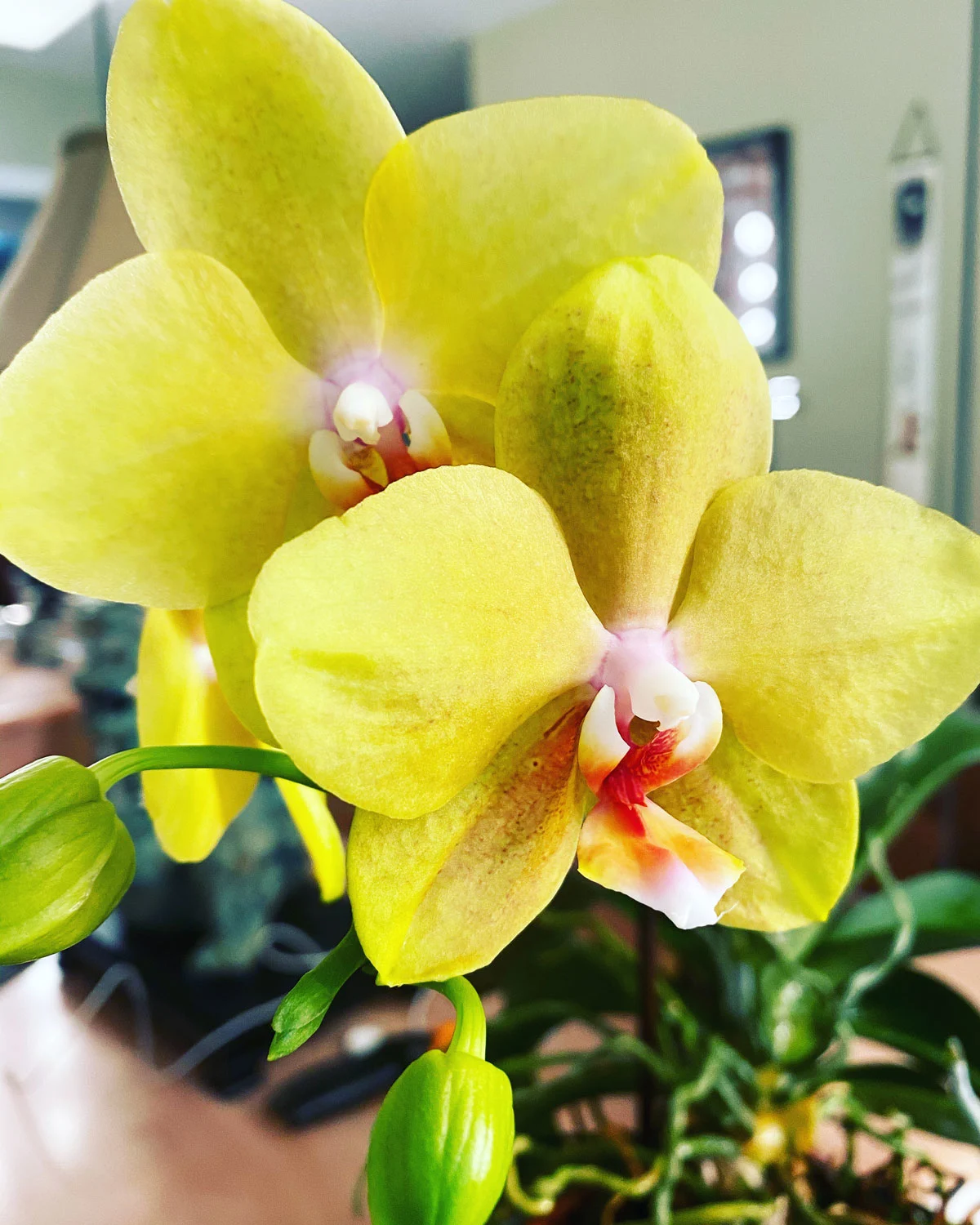
Why Isn’t My Orchid Blooming?
1. Light
The number 1 reason why your Phalaenopsis orchid isn’t blooming is light. Moth orchids are considered among the “low light” orchids, but they still need sufficient light to bloom!
I want you to walk over to your orchid and look at the color of the leaves. Is it a deep, dark green? If so, your plant probably isn’t getting enough light. Move it to a brighter location.
I keep many of my Phalaenopsis orchids directly in front of Eastern-exposure windows.
And by directly in front, I mean within 1-2 feet of the window. You can’t expect plants to flourish, especially flowering plants, if they are too far from any window.
The morning sun is great for them, but just be careful not to expose your Phals to too much sun otherwise they may suffer sunscald. Many times though, sunscald is caused by not acclimating your plant slowly enough to higher light.
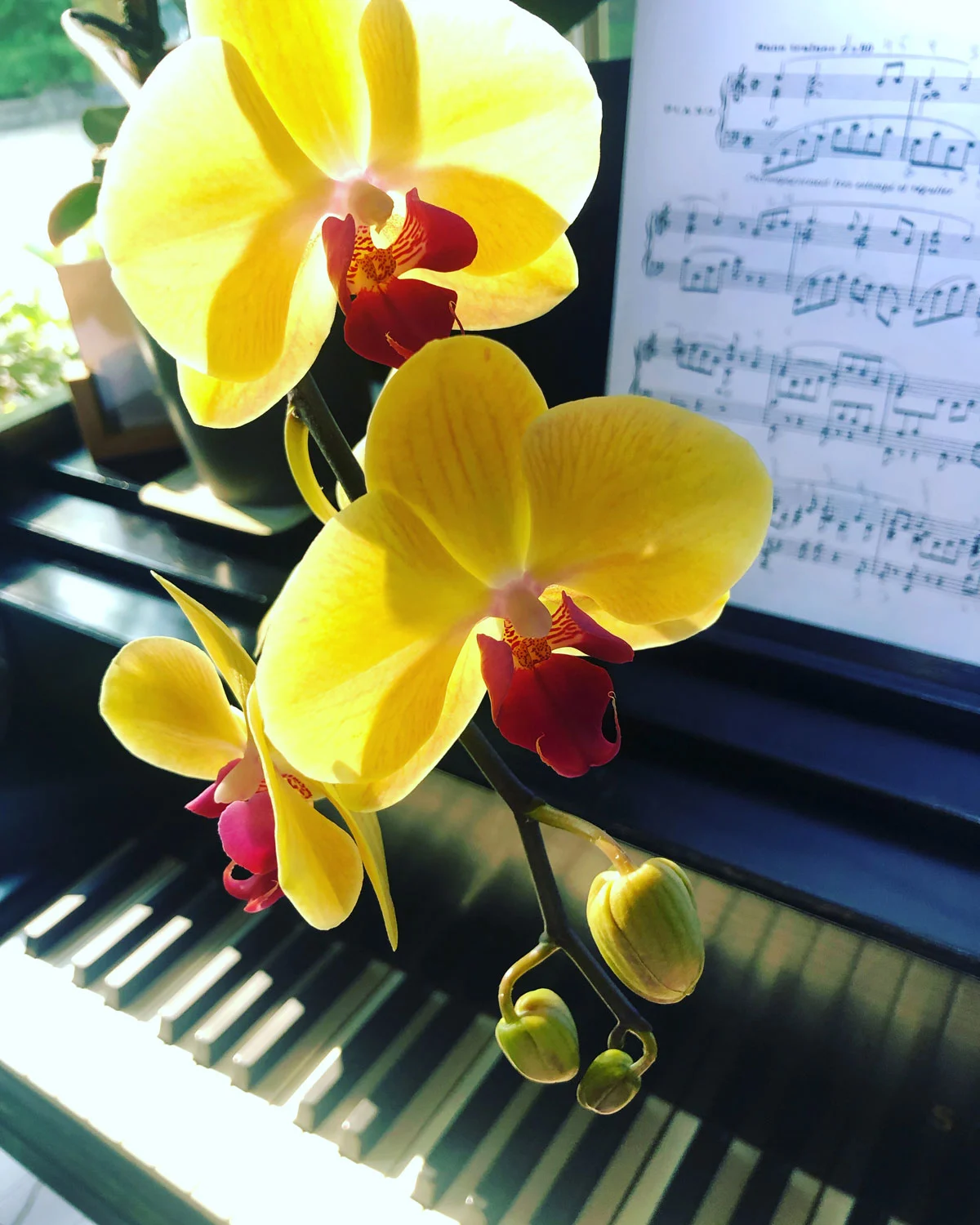
You know that your moth orchid is on the high end of it’s light tolerance if you start to see that the edges of the leaves are reddish in color. That’s OK, but your plant is warning you not to get any brighter.
There is one exception that I make when it comes to light. When my moth orchid is in bloom, I move it to various areas (temporarily) in the house purely for display, even if I normally wouldn’t place it there for normal growth.
What’s the point if I can’t enjoy my plant while it is in bloom?
After the plant is done blooming (which could be months!), I’ll return the plant back to its window so it can continue growing. Just a quick note though…if you display your plants in a lower light situation, the flowers may not last as long.
2. Lack of Proper Watering and Fertilizing
Walk over and visit your orchid again. How do the roots look? Are they dry and shriveled up?
If so, you’re probably keeping your orchid much too dry.
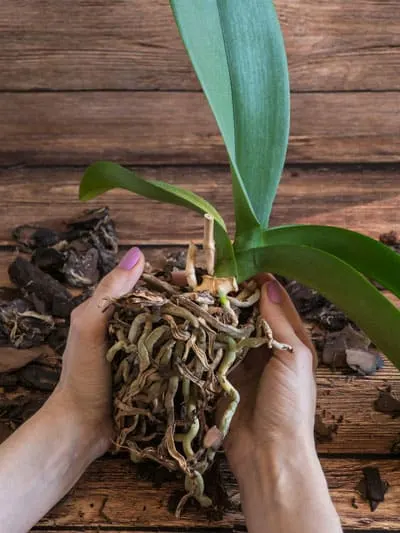
Some orchids such as cattleya have pseudobulbs which store water and this makes them more drought tolerant.
Moth orchids don’t have pseudobulbs to store water so you need to be more attentive to the watering. They simply don’t like to dry out completely.
Healthy orchid roots should be plump and look greenish, white or silver. They can even be yellow in color, and as long as they are plump, they’re fine. Usually, orchids will have yellow roots inside of teh pot if those roots are not receiving any light.
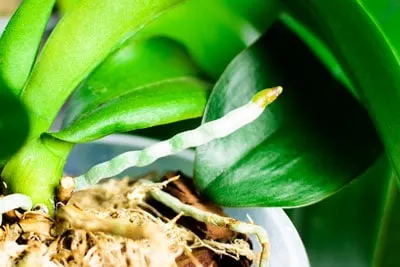
If the roots are shriveled or wrinkly but still firm, your plant needs more water.
If the roots are mushy and stringy, you’ve probably overwatered your orchid and caused the roots to rot.
And PLEASE whatever you do, do NOT water your orchid with ice! I don’t care what the label says. Moth orchids originate in the jungles of southeast Asia.
There are monkeys in those jungles. Have you ever seen a monkey with a popsicle? I think not. So don’t give your orchids ice to water them. This is just asinine!
I feel so strongly against this that I wrote a blog post on why you shouldn’t water your orchids with ice. Please read it when you’re done reading this post!
Pin this image below on Pinterest
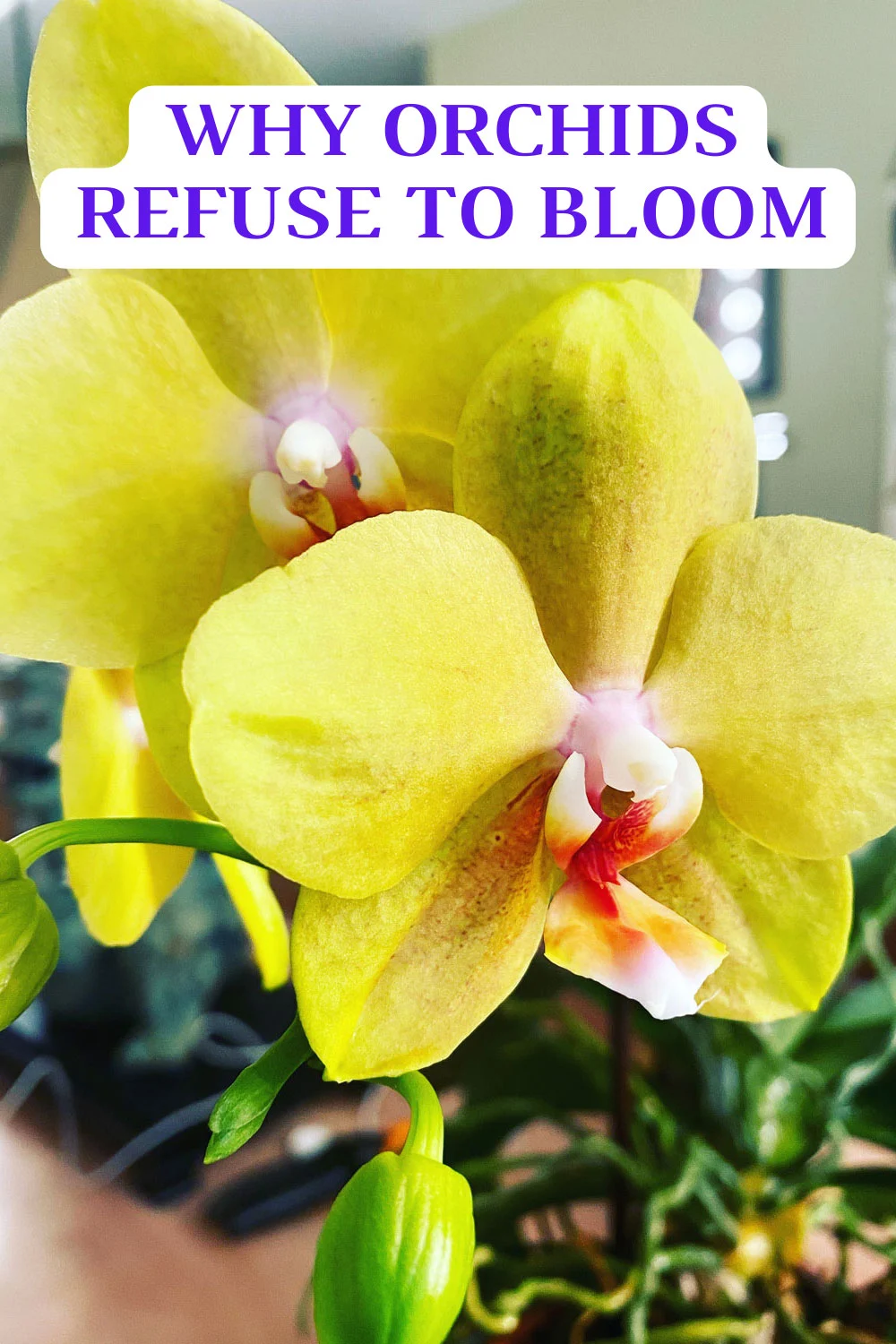
Don’t let your orchid pot dry out completely, if you can help it, but at the same time, don’t let your plant sit in water at any time. You need to strike a balance in between!
Orchids need perfect drainage. In nature, they grow on trees. They are often exposed to rain and deliciously humid jungle air, but they have perfect drainage.
They’re never sitting in water. If you slip your orchid into a decorative pot with no hole, that is fine.
Just make sure that when you water your plant, that it has fully drained into the sink before you slip it back into the decorative pot. I do this all the time.
Once you learn proper watering, be sure to fertilize your orchid! When I ask people if they fertilize their orchid, I normally get a sheepish “no.”
Well, hell! Every plant needs nutrients to survive, so go get some fertilizer! I’ve used many different fertilizers with good results, and they are available on Amazon.
My fertilizer of choice for all of my plants is Dyna Gro Grow. I use it on almost all my plants, including my orchids. It is an amazing general-purpose fertilizers. All my plants are growing beautifully!
Whatever you do, please fertilize. A good rule of thumb is “weekly, weakly.” Moth orchids don’t need a ton of fertilizer, but a very dilute application weekly for most of the year except during the middle of winter if your plant has stopped growing.
If you let your plant get too dry, water it with plain water first, and then apply a solution of fertilizer. This is so you don’t shock your plant.
And please use room temperature or warm water when you water your orchids. Never cold water.
If you want to learn all about how to get your orchid to rebloom reliably and have healthy, thriving moth orchid plants, don’t miss my signature, online orchid care course, Become an Orchid Master. It also includes bonuses with support from me, personally, to guide you in your orchid journey!
3. Insufficient Temperature Drop at Night
Moth orchids are tropical plants and need warm temperatures, so if you are comfortable in a room inside your house, your orchid probably is too.
If you have a stubborn orchid, something that often triggers bloom is a temperature gradient between day and night.
Often times, if you expose your orchid to night temperatures that are 15°F (or more) cooler at night versus the day, this may kick-start your orchid into bloom.
Just be sure to keep your plant above a minimum night-time temperature of around 50°F (10°C) or above.
One easy way to get this temperature drop in the evening is to place your orchids outside in the summer!
A Summer Outdoors
Summering your orchid outdoors does miracles for your plant, whether it is an orchid or any other houseplant that you have. I can’t emphasize this enough!
If you do bring your orchids outside, it is extremely important to harden your plants off so that they don’t burn.
If you live in an area with cold winters like I do, wait until the nighttime temperatures are consistently 50°F (10°C) or above before placing your orchid outside.
For my region of the Earth, this normally happens around mid-May or so, but I always keep my eye on the weather report and adjust accordingly.
Summer your plants outside whenever possible. Let them reap the benefits of the air circulation, rainwater, and humidity.
Leave your orchid outside all summer until the nighttime temperatures threaten to go below 50°F (10°C) and bring your plant back inside at that time.
A few words of caution though if you summer your plants outdoors. Make sure that your orchids are not sitting in water. If you have it slipped in a decorative pot with no drainage hole, you may need to remove it and place it into another pot with a drainage hole.
Otherwise, after a rainfall, you will constantly have to go and drain the pot.
Keep your plants in a protected area from the wind. You don’t want your plants thrashed around and damaged. And be especially careful when you first move your plant outside to keep it protected from any sun.
The intensity of the sun outside is different from the sun coming through your windows into your home. Your plant will burn outside, so it needs a period of hardening off in complete shade. Ideally, put it in complete shade, especially when you first bring them outdoors.
Need More Help With Your Orchids?
If you have more serious woes with your orchid plants, other than just not blooming, you may want to check out Help My Orchid Is Dying!
In this blog post, I describe many possibly problems that you might be having with your orchids and how you can fix them.
If you want the most complete, quick and easy to understand guide on orchid care, please check my eBook, Moth Orchid Mastery.
In under an hour, you will be equipped with everything you need to easily grow these elusive plants! From light, watering, repotting, fertilizing, what to do after your plant is done blooming, and more!
Do you have any questions? Comment below!

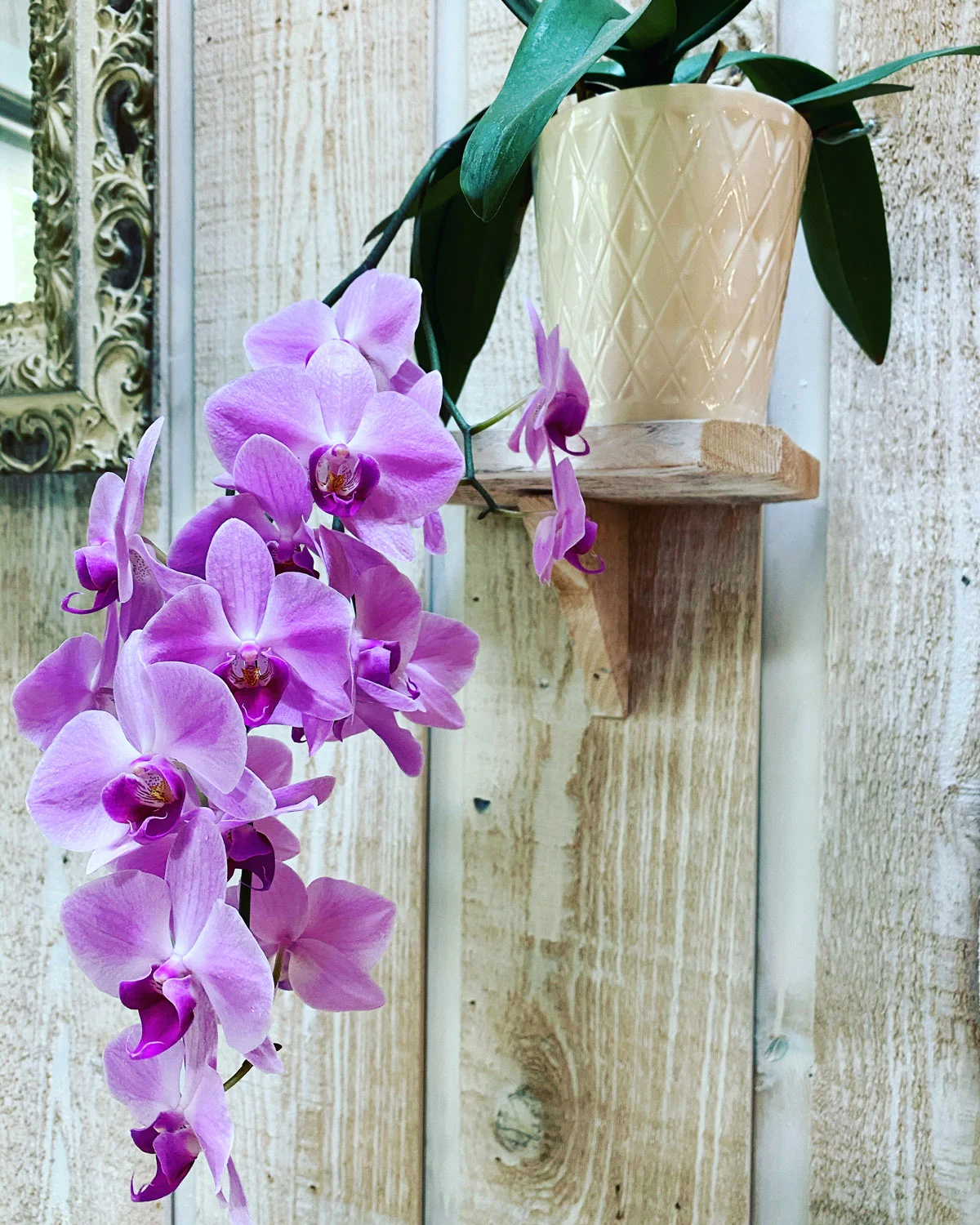
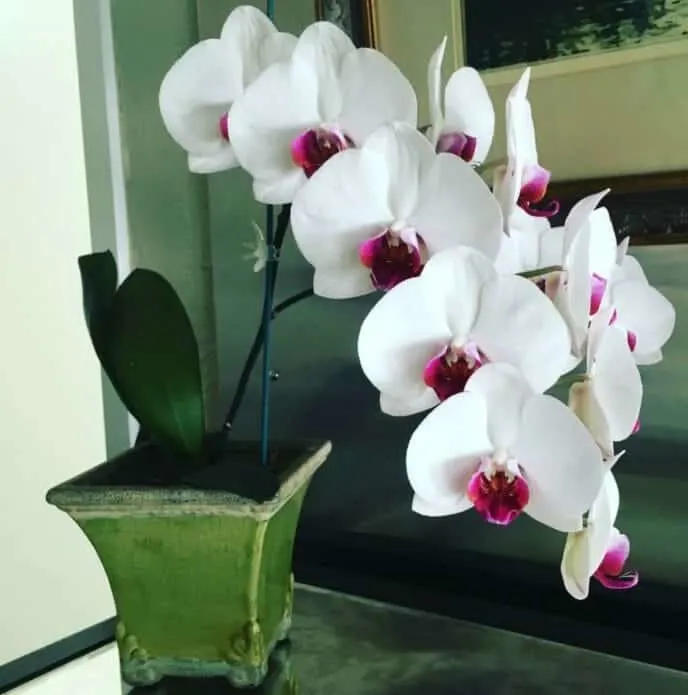
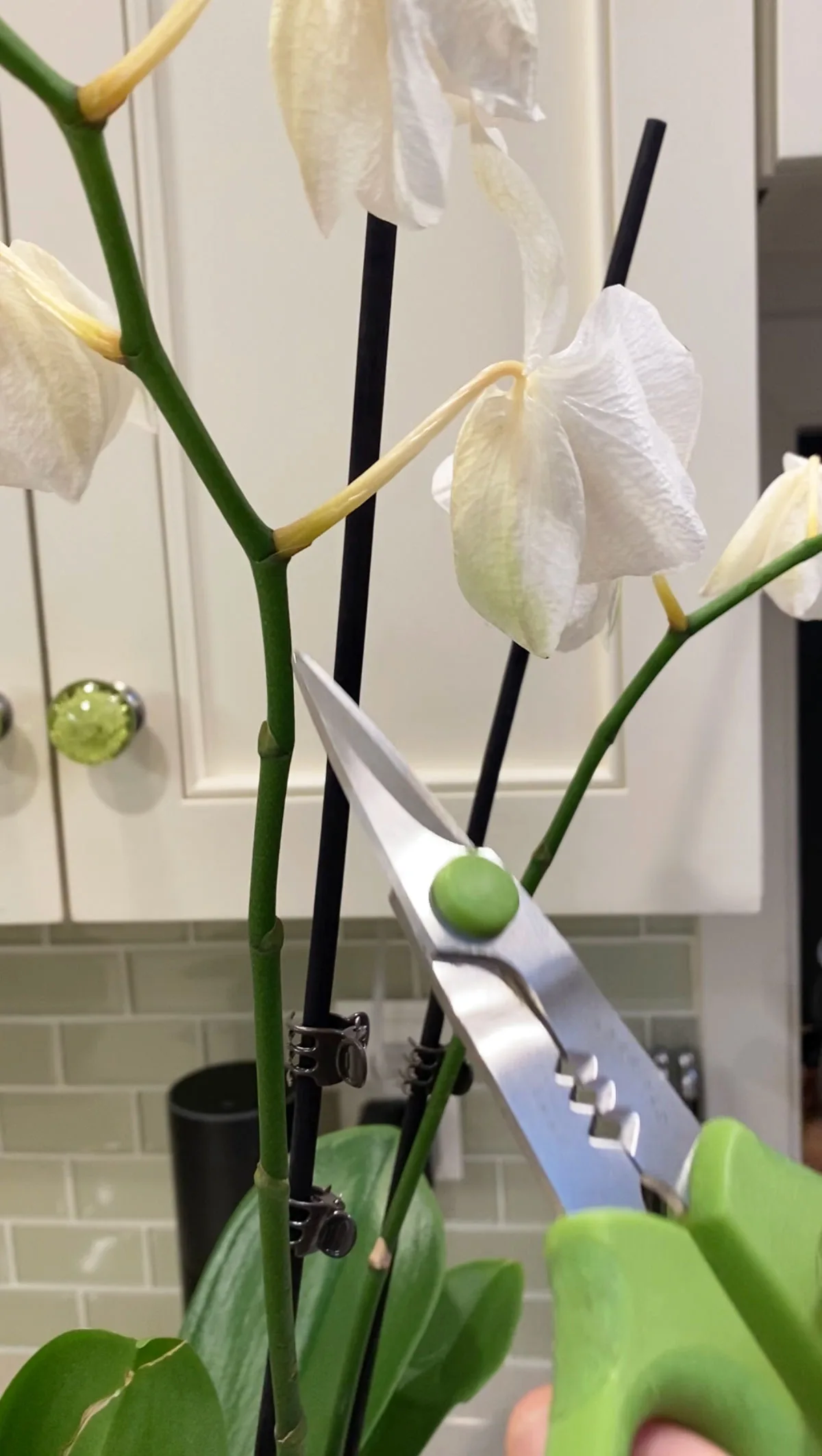
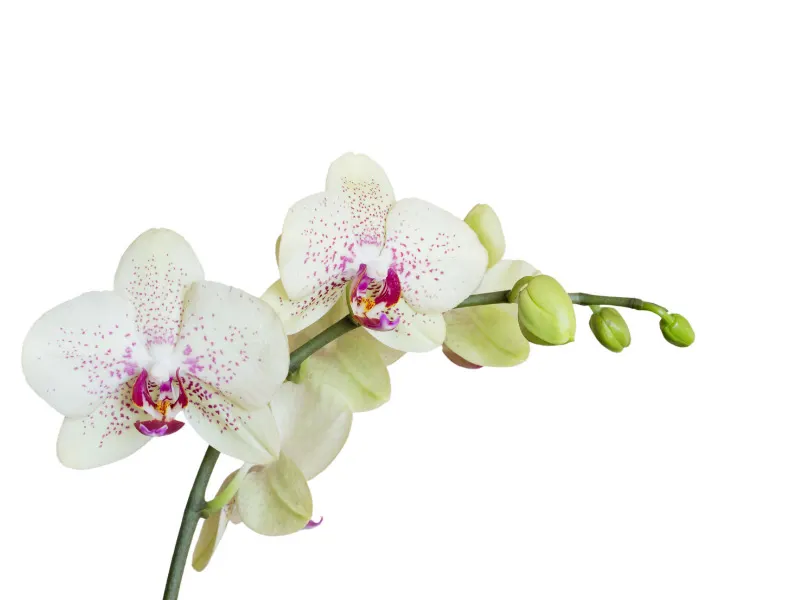
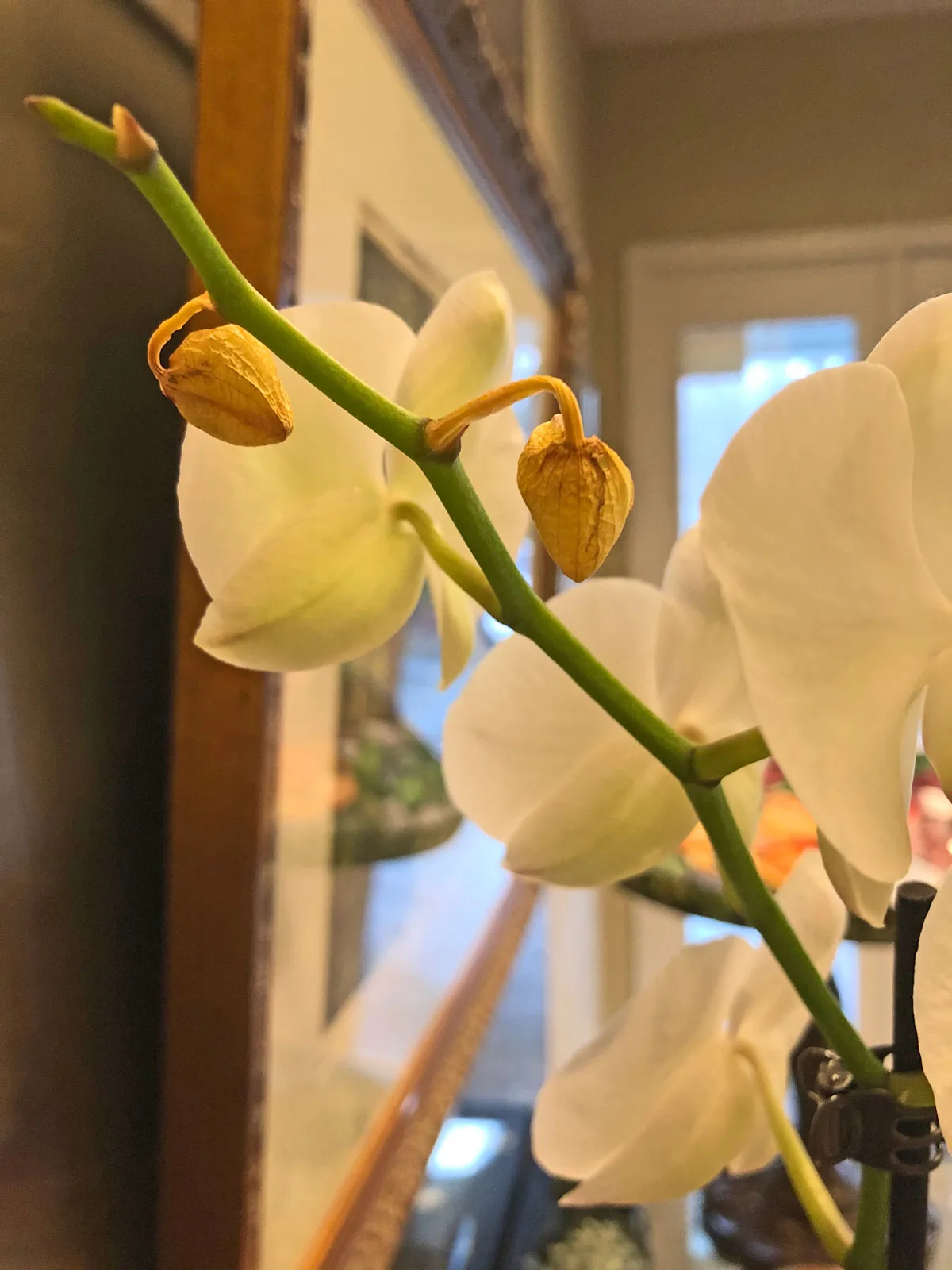
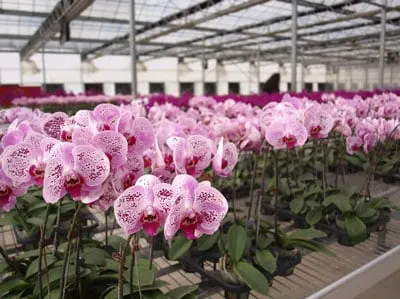
Anita Rusnak
Sunday 21st of April 2024
It’s a Walmart orchid that was given to me in February 2023. It’s in its original 3 inch pot with whatever medium those growers use. I have it on a table in front of an eastern exposure window (about 1 foot away). We have geothermal heat so the temperature is pretty constant. It spent last summer outside under a covered front porch (eastern exposure) and this is the second (failing) spike that it’s produced since I’ve had it. I water it with room temperature tap (well) water with orchid food dissolved according to directions. And I’ve been misting the air roots for months. I THINK I’m watering it properly. This bud blast has been the same pattern as two others that I’ve had so I suspect there’s something up with this environment. 😞
Anita Rusnak
Thursday 18th of April 2024
While my phalaenopsis appears healthy (leaves, roots, and flower spikes), I NEVER get past bud blast. My plant tries its little heart out to blossom time and again, but always - bud blast. I’ve done everything that you recommend but I just can’t figure out what I’m doing wrong.
Anita Rusnak
Sunday 21st of April 2024
@Raffaele Di Lallo,
I’m sorry, Raffaele, but I’m terrible with these formats and failed to notice that I can reply directly to you. As you can see, I posted my response to your question to the whole site. I’ll know better the next time and thank you for taking the time to see if you can offer any further suggestions.
Anita Rusnak
Sunday 21st of April 2024
@Raffaele Di Lallo,
Raffaele Di Lallo
Thursday 18th of April 2024
Sorry to hear that Anita! How long have you had the plant? Can you describe the growing area and conditions (light, temperature, any drafts, your watering, substrate that it is growing in, etc).
Maria
Monday 22nd of January 2024
Hi. So glad I found your page! I love all the content! I live in New York and I want to grow orchids outside during the summer months, then bring them inside for the colder months. Is this possible? I’ve seen beautiful orchid plants growing on trees, do you think I can grow something like that?
Raffaele
Thursday 25th of January 2024
Hi Maria! I'm glad you enjoyed the post. The orchids will freeze and die where you live if you mount them on trees and leave them there. It only works year round in warm/tropical climates. But you can definitely put your potted orchids outside during the warm months, and then bring them in before it gets too cold. They will love that and you will get good blooming this way! Just make sure that when you move them from indoors to outdoors, place them in complete shade. Then either leave them in full shade or if you want a little direct sun, introduce a little morning sun if you'd like.
Amanda
Thursday 16th of March 2023
I stumbled onto your blog this morning while looking for ways to help save my orchid with droopy, limp leaves. Now, 3 or 4 posts later, I'm so glad I found this! These posts are so helpful. I have had several orchids over the course of my adult life, but I really only got interested in gardening about 10 years ago,and houseplants about 5 years ago. I currently have 2 orchids that I've managed to keep alive for 3 and 2 years respectively. One rebloomed for me once, but it did not this year. We moved, though, and I wonder if its relocation and repotting didn't affect that. The other was a Walmart rescue, and I wasn't surprised when it didn't bloom again this year. That is the one with droopy leaves. Anyhow, sorry for rambling. I'm looking forward to subscribing and learning more!!
Amanda
Monday 20th of March 2023
@Raffaele, thanks so much! The oldest of my 2 orchids that I didn't think would bloom this year has now got a bloom spike. I noticed it right after I found your blog. And thanks to your posts, I now know not to rotate the plant in its window! The other one that has droopy leaves, I have pulled out of its pot and trimmed the roots (I now know that when I repotted it, I should've soaked the bark. I didn't and the roots were rotting.) It's in an east-facing window and I'm hopeful that it'll recover. Thank you again for your amazing tips!
Raffaele
Friday 17th of March 2023
Hi Amanda! Glad you are enjoying my blog, and I'm confident that the orchid posts will help! :-) Good luck!
Mary Kay
Thursday 9th of February 2023
I have one that does not have flowers but is growing sets of leaves. Can I repot these?
Raffaele
Thursday 9th of February 2023
Yes, you should be ok to repot now :-)